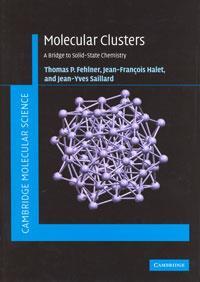Molecular clusters: A bridge to solid-state chemistry

T P Fehlner, J-F Halet and J-Y Saillard
Cambridge, UK: Cambridge University Press 2007 | 390pp | ?70.00 (HB) ISBN 97805218523643
Reviewed by Robert Benfield
It is over 50 years since direct metal-metal bonds were recognised in carbonyl compounds. Around the same time, polyhedral boron hydrides were discovered. Metal halides form another class of clusters. New bonding theories had to be developed to explain the structures of all these molecular clusters. Metal cluster compounds attracted interest as potentially combining homogeneous and heterogeneous catalysis. Their structures and properties gave insight into the development of metallic character.
In recent years, headline attention has moved on to other materials such as carbon nanotubes and metal nanowires, but research into molecular clusters has continued apace. This book gives a comprehensive account of the current state of research in the field. The scope is wide, covering the authors’ expertise in main-group and transition metal clusters, and also materials with extended solid-state structures. The emphasis throughout is deliberately on structure and bonding, rather than synthesis and reactivity. The content is well-balanced, communicating important ideas such as isolobal relationships and band theory with plenty of examples, but avoiding overwhelming detail. Each chapter includes worked examples, additional problems based on recent research literature (with outline answers), and key references up to 2005.
The book is successfully targeted at advanced undergraduates and graduate students in chemistry. I would have liked to see more coverage of the physical properties of cluster compounds, relating these to their electronic structures. Nonetheless, the book will also be valuable to those looking for real materials with potential applications in fields such as magnetism, opto-electronics and energy storage.












No comments yet